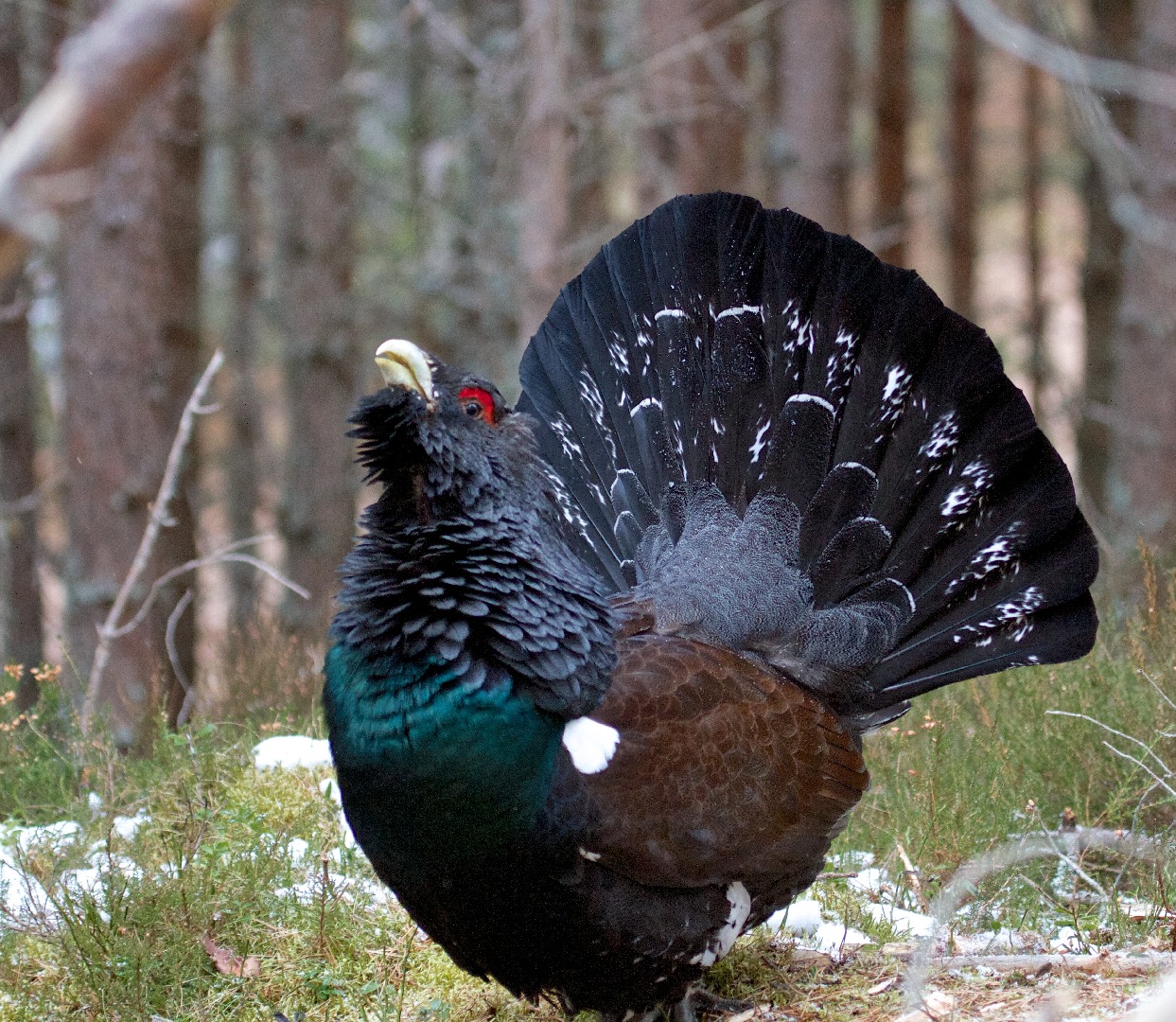Western Capercaillie
A species of Capercaillies and Black Grouse Scientific name : Tetrao urogallus Genus : Capercaillies and Black Grouse
Western Capercaillie, A species of Capercaillies and Black Grouse
Botanical name: Tetrao urogallus
Genus: Capercaillies and Black Grouse
Content
Description People often ask General Info
Description
The western Capercaillie is a large gamebird that may be elusive, but males are known to attack hikers close to their territory. The bird is typically found in conifer forests and shrubby clearings. Males like to show off in the spring when they gather in flocks to raise and fan their tail feathers, similar to a turkey.
Size
1.2 m
Colors
Brown
Black
Gray
Life Expectancy
10 years
Nest Placement
Ground
Feeding Habits
Western Capercaillie forage for buds, leaves, berries, and insects, relying on conifer needles in winter. They exhibit specialized herbivory, favoring blueberry foliage and berries in summer, and seek out grit to digest coarse food. Chicks prioritize a protein-rich insect diet, with survival depending on weather conditions.
Habitat
Western Capercaillie resides mainly in vast old-growth coniferous forests with a blend of pine, spruce, and fir, sometimes mixing with broadleaves. Habitats have dense, berry-rich undergrowth and may feature wet terrain with bogs. Ideal forests have partial canopies, offering seasonal variation: more open for winter, denser with fruits in summer. Their altitudinal range reaches up to 2000 m, sometimes including alpine scrubland.
Dite type
Herbivorous
People often ask
General Info
Feeding Habits
Bird food type
Behavior
Western capercaillie are diurnal game, i. e., their activity is limited to the daylight hours. They spend the night in old trees with horizontal branches. These sleeping trees are used for several nights; they can be mapped easily as the ground under them is covered by pellets. The hens are ground breeders and spend the night on the nest. As long as the young chicks cannot fly the hen spends the night with them in dense cover on the ground. During winter the hens rarely go down to the ground and most tracks in the snow are from cocks. 
Distribution Area
The capercaillie is a non-migratory sedentary species, breeding across northern parts of Europe and the Palearctic in mature conifer forests with diverse species composition and a relatively open canopy structure. At one time it could be found in all the taiga forests of the Palearctic in the cold temperate latitudes and the coniferous forest belt in the mountain ranges of warm temperate Europe. 
Species Status
This species has an estimated range of 1,000,000–10,000,000 km (390,000–3,860,000 sq mi) and a population of between 1.5 and 2 million individuals in Europe alone. There is some evidence of a population decline, but the overall species is not believed to approach the IUCN Red List threshold of a population decline of more than 30% in ten years or three generations. It is therefore evaluated as Least Concern. 
